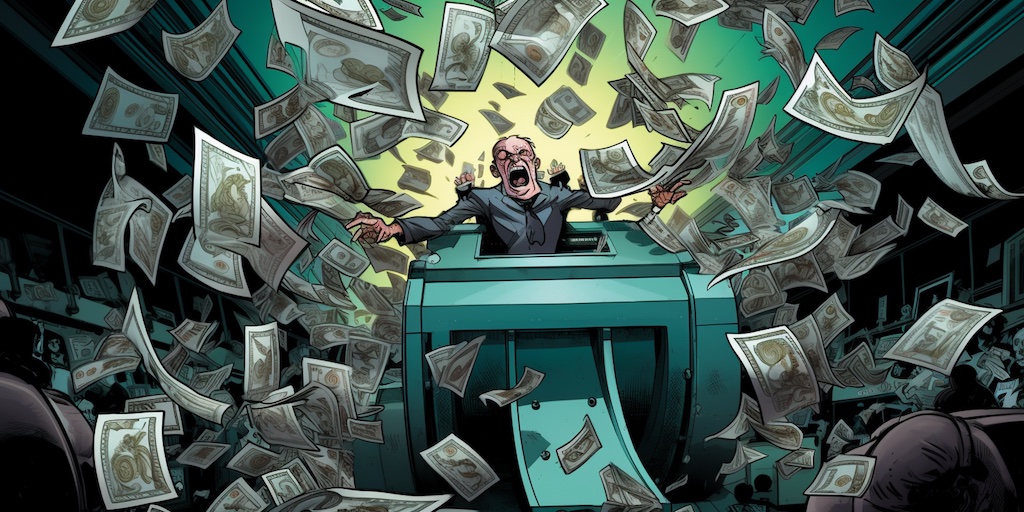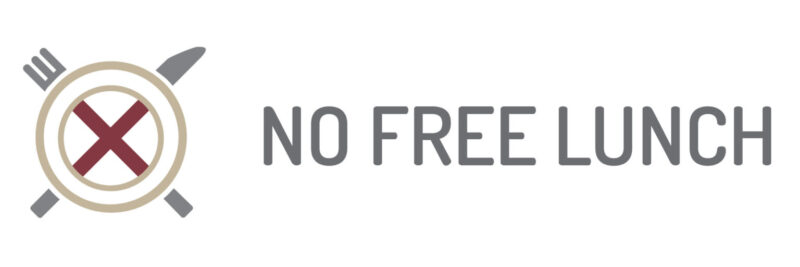We lighten up the dull concept of currency debasement by looking at the fall of the Roman Empire, coin clippers, hyperinflation in the Weimar Republic and the rise of Bitcoin.

What is currency debasement? For lovers of Indie rock, it sounds a bit like a classic Pixies track but actually refers to the dilution of money’s value.
Currency debasement & commodity money
When money was made of something valuable, silver and gold – aka commodity money – the main method of debasement was making coins with an increasing amount of cheap alloy content.
This kind of cheap trick ended badly for those in charge. Citizens quickly noticed the relative change in the intrinsic value of coins, so they charged more for goods and services. Inflation isn’t a new phenomenon.
The Romans wrote the book on currency debasement
The first government-issued coin, the Lydian Stater, a mix of silver and gold, dates to around 700 BCE in modern-day Turkey.
The standardised coinage that followed, made of pure precious metal, brought considerable benefits to trade, which expanded across Eurasia and beyond.
The growth of the Roman Empire was in part attributed to their strategy of imposing their currency and tax system on new territories.
On the flip side, the Romans were also among the first to learn the harsh realities of currency debasement.
The Silver Denarius was the standard currency for the first 220 years of the Roman Empire, but maintaining its high purity at the same time as financing expansion abroad and elaborate projects at home was an impossible tightrope to walk.
Under Emperor Augustus – BCE 27 – the Denarius was as pure as the minting process could possibly make them (about 98%). By 270 CE, under increasing economic pressure, Claudius II had reduced the silver content to just 0.02%.
Successive emperors couldn’t expand the supplies of gold and silver at a fast enough rate to support building monuments to their personal legacy, keeping the population of Rome content with bread and circuses and, most importantly, paying their armies.
Plundering gold and silver abroad required slaves and soldiers; capturing slaves required armies who – seeing the declining spending power of general currency – insisted on being paid in silver, which meant more silver mines and….more slaves.
Even the barbarian mercenaries were astute enough to insist on being paid in gold. It was a Ponzi scheme, before Charles Ponzi invented the idea.
Monetary debasement is considered to have been a contributing factor in the eventual collapse of the Roman Empire, which had a knock-on to Europe as a whole.
Rome’s collapse led to what is known as the Dark Ages, where the use of money and pan-European trade dramatically declined.
Coin clipping & currency debasement
The most widespread form of currency debasement in the period of commodity money was inflicted by those who controlled the supply. There were, however, ways that the average citizen could debase money, by simply clipping, shaving or sweating a small amount of the gold or silver from coins.
Now, you might think that a few clipped coins here and there wouldn’t make much difference, but in 17th-century England, this form of demand-side currency debasement was so rampant the whole money stock had to be replaced in a campaign known as the Great Recoinage.
None other than Sir Isaac Newton was drafted in as Warden of the Mint to find ways to improve the efficiency and scale of production to meet this unprecedented need while ensuring all new coins featured ridged edges to make debasement much harder to achieve.
You can get a sense of the seriousness with which currency debasement by counterfeiting or coin clipping was taken by the punishment imposed – death.
From Rome to London, the form of execution for coining wasn’t a simple, straightforward hanging but ranged from being fed to wild animals or hung drawn and quartered.
Currency debasement & fiat money
When money transitioned from a commodity to a form that represented a commodity, i.e. a note, the problem of debasement didn’t disappear.
No sooner had the Bank of England been established in 1696, issuing certificates of deposit, acting as spendable notes, than fake versions emerged, creating a diluting effect on money’s value as they weren’t backed by any gold or silver deposits.
One of the consequences of the Great Recoinage was the introduction of the first coin in England with no intrinsic value. It simply wasn’t cost-effective for the mint to produce low-denomination coins using gold or silver.
In retrospect, it was only a matter of time before someone in power realised that money didn’t need to be backed by anything but trust, ushering in the era of Fiat Money – money by decree – and a whole new paradigm in monetary debasement.
Fiat money is traced to the start of the First World War, as governments desperately needed to ramp up military spending without the shackles of a gold standard, and the aftermath of the Allied victory provides one of the most famous examples of currency debasement via uncontrolled money printing – Weimar Hyperinflation.
Hyperinflation in the Weimar Republic – debasement on steroids
Struggling with the political and psychological impact of defeat in World War 1 and the punitive impact of the Treaty of Versailles (the enforced peace settlement), the German economy was in freefall.
Not only was Germany saddled with huge reparations, the loss of their colonies and territory, including key coalmining regions, but its pariah status made international borrowing almost impossible.
The government’s solution was simple; print their way out of monetary problems – currency debasement on steroids.
The vicious cycle of hyperinflation that followed in the Weimar Republic from 1919-23 has become a case study for how to kill a national currency, as documented in the excellent account of the events “When Money Dies” written by Adam Fergusson in 1975.
Here are some highlights statistics:
- Weimar hyperinflation saw the creation of a 1 billion mark coin – the highest denomination coin on record
- At the peak of Weimar hyperinflation, one US Dollar was worth 4.2 trillion marks. At the time, a trillion was a million-million or 1012
- In October 1923, the number of marks to the pound equalled the number of yards to the Sun
- The cost in German marks of 500,000,000,000 eggs in 1918 would buy you just five eggs in 1923
- In 1913, the German Mark held an equivalent value to the Shilling, Lira and Franc. Ten years later, one Shilling, Lira or Marc equalled 1,000,000,000,000 Marks.
“[September, 1923] The towns were starving. The countryside had had a bumper harvest , but there it remained because of the farmers’ steadfast refusal to take paper [money] for it at any price”
When Money Dies, Adam Fergusson
Dropping Money, Not Bombs
Germany wasn’t alone in experiencing hyperinflation. Austria and Hungary experienced similar monetary death spirals.
You might have thought that modern economies would have learned the basics of financial gravity, but unfortunately not.
Such was the destructive power of the Weimar hyperinflation that currency debasement was actively considered as a cheap and efficient tactic by both sides in World War II.
Operation Bernhard was a Nazi plan to forge British bank notes and crash the value of the pound but eventually focused on financing espionage efforts through counterfeit money.
Despite money creation having greater destructive power than bombs, all restraints on monetary expansion were effectively removed by Richard Nixon in 1971, and fiat money has been the norm ever since.
Should we care about currency debasement?
The 2008 Financial Crisis ushered in a whole new level and speed of monetary debasement, used as CPR for flatlining economies. A similar approach was used in response to the COVID-19 pandemic.
Monetary debasement is one of the causes of inflation, but the causality is complex; otherwise, why would national governments keep pushing their debt ceilings ever higher?
Venezuela, Zimbabwe, Argentina, Turkey, and Nigeria are all currently experiencing runaway inflation,
The US Debt stands at close to $34 trillion, increasing by around $1 million every 30 seconds.
If you sign up for Modern Monetary Theory, debts and debasement aren’t a problem. However, it’s no coincidence that in response to this growing debt monster, a revolution in money focused on taking the power to debase money out of the hands of the few into the many has emerged, its flag-bearer being Bitcoin.
It is an open question as to whether Bitcoin is the start of a new paradigm based on old ideas of monetary discipline or whether MMT saves the fiat model.
Can a technological revolution driven by AI, robotics and the Internet of Things grow modern economies out of their current death spiral toward the dream of a post-scarcity society? If not, as with the Romans or the Weimar Republic, contemporary currency debasement may be followed by a digital dark age.
No Free Lunch
There is no such thing as a free lunch, but if you’re hungry to find out why, we’re here to help.
You can learn the meaning and origin of the no free lunch concept, as well as the broader philosophy behind the idea that nothing can ever be regarded as free.
We look at our relationship with money and truth, examining all of the supposed shortcuts, life hacks and get-rich-quick schemes.
